Prince-oprichnik Afanasy Vyazemsky
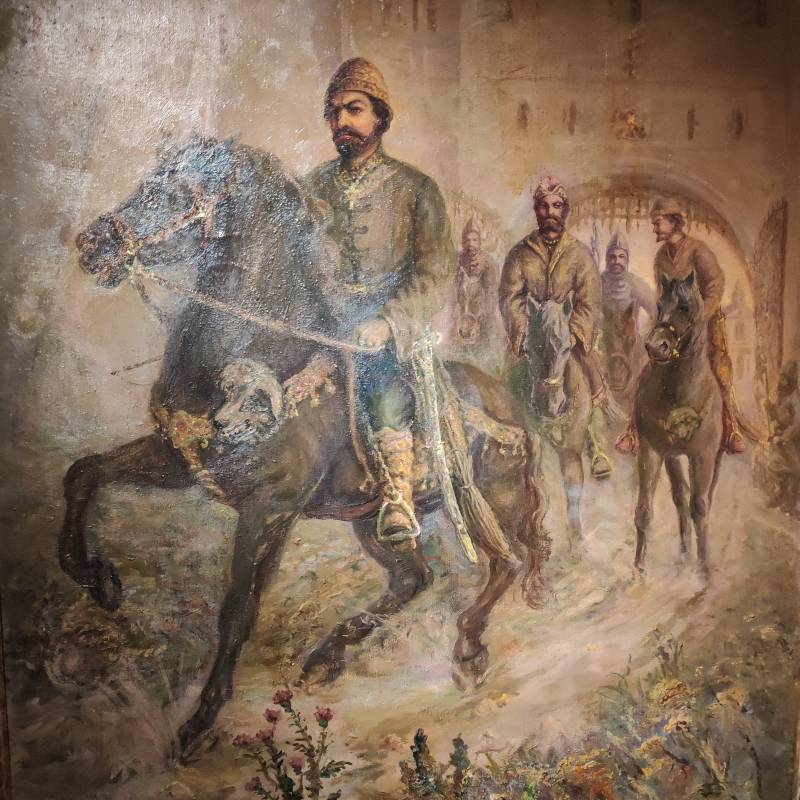
This image of the guardsmen in a painting by an unknown artist can be seen in the Alexandrovskaya Sloboda Museum-Reserve.
Today we will continue the story about the famous guardsmen of Ivan the Terrible and talk about Afanasy Ivanovich Vyazemsky. He is known to many from the famous novel by Alexei Konstantinovich Tolstoy “Prince Silver”.
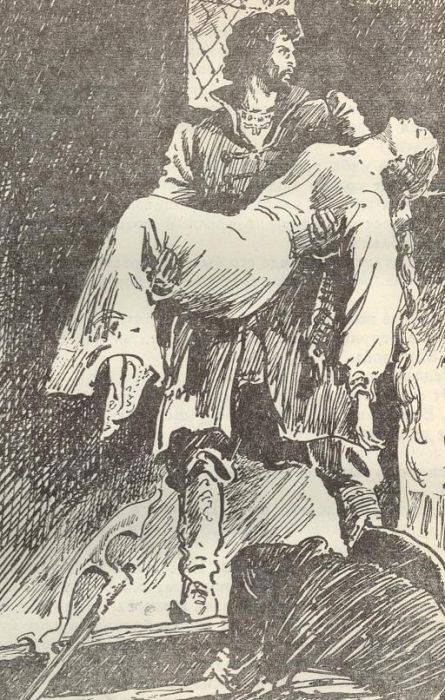
I. Pchelko. Prince Vyazemsky and Elena
In addition, his features are easily discernible in Prince Vyazminsky, a character in P. I. Tchaikovsky’s opera “The Oprichnik,” written based on I. I. Lazhechnikov’s tragedy “The Oprichniki.”
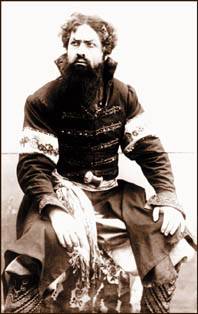
F. Chaliapin as Prince Vyazminsky
Origin of Afanasy Vyazemsky
In the novel “Prince Silver” A.K. Tolstoy, through the mouth of boyar Morozov, characterizes many figures of the oprichnina. Since this writer used Karamzin’s “History of the Russian state,” this characterization turned out to be extremely biased and monstrously biased (like Karamzin’s entire multi-volume work, which has long been practically withdrawn from scientific circulation). Let's still see what the boyar Druzhina Morozov says to Prince Serebryany. The beginning of his monologue is simply a hymn to class arrogance:
Next begins the characteristics of the guardsmen:
What can I say? The Basmanovs were not “artistic” at all, and the head of this family, Alexey, as a governor, had enormous services to the state. In addition, both Basmanovs were practically uninvolved in the oprichnina repressions, which began only in the first half of 1568, but they themselves became their victims.
Malyuta Skuratov, who was mortally wounded during the assault on the Livonian fortress of Paide, is a relative of Ivan the Terrible’s third wife Marfa Sobakina. He was known to his contemporaries as a trusted employee of the Tsar and the governor - there were enough executioners without him. But the characterization of the outstanding statesman Boris Godunov, a relative of the first wife of the father of Ivan IV Solomonia and the wife of Tsarevich Ivan Ivanovich Evdokia (both Saburovs), who was not involved in any special “atrocities” of the oprichnina, is especially blatantly unfair.
What does boyar Morozov say about the hero of today’s article?
As they say, there is a mistake here too. By that time, the Vyazemsky family had become “emaciated” and “shredded”; the family possessions – the cities of Vyazma and Khlepen – had also been lost. In documents of that time, the Vyazemskys even began to be called not princes, but “children of princes”; none of them dreamed of a place in the Boyar Duma.
The Vyazemsky princes traced their origins to Rurik and his descendants - the Smolensk princes. At the end of the XII - beginning of the XIII centuries. The Vyazemsky family split into two branches. The representative of the first was, for example, the poet, literary critic, member of the Imperial Academy of Sciences and participant in the Patriotic War of 1812, Pyotr Andreevich Vyazemsky. And the hero of the article belonged to the second branch of the Vyazemsky princes.
For some time, Vyazma and the surrounding lands belonged to the Grand Duchy of Lithuania and Russia, but in 1494 they came under the rule of Moscow. In the 1550s There were about 30 representatives of this family in the royal service, but under Ivan the Terrible, in addition to Afanasy Vyazemsky, only one of them occupied a more or less prominent position - Alexander Ivanovich Vyazemsky-Glukhoy, a successful governor who led regiments to Astrakhan and Lithuania. He, like Afanasy Vyazemsky, was able to make a brilliant career only thanks to the establishment of the oprichnina by Ivan IV, where “social elevators” that were inactive in the old system of parochial relations began to work.
Beginning of the service of Afanasy Vyazemsky
The place and time of birth of Afanasy Ivanovich Vyazemsky, nicknamed Dolgoy, are unknown. It was first mentioned in 1550 in the “Yard Notebook” among “Lithuanian yard", which served "in Kostroma" It is reported that he was so poor that he did not have the means to equip himself for the campaign and therefore received money from the sovereign’s treasury - “to the rescue».
In 1551, Afanasy was in the army during the campaign against Velikiye Luki and Polotsk. In November 1553, Ivan IV appointed him the seventh steward at the court of the former Kazan khan Yadgar-Muhammad, who was baptized and now became Simeon Kasaevich. The rise of the hero of the article began during the Polotsk campaign of 1562-1563, in which he, apparently, under the patronage of A.I. Vyazemsky-Glukhoy, served as a baggage governor. The army was moving then "necessary (that is, in need) and quietly" (slowly):
The tsar was forced to travel with the “chosen people” to the “voivodship regiments” and
One of these “chosen people” was Afanasy Vyazemsky, who, apparently, then provided great assistance to Ivan IV in organizing the movement of troops. The Tsar appreciated his efforts and took him with him in December 1564 when he left for Aleksandrovskaya Sloboda.
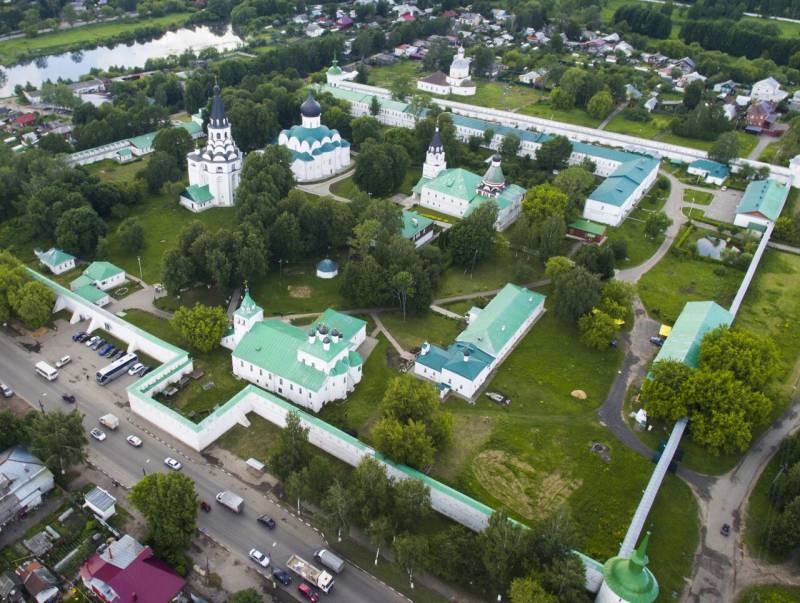
Alexandrovskaya Sloboda Museum-Reserve
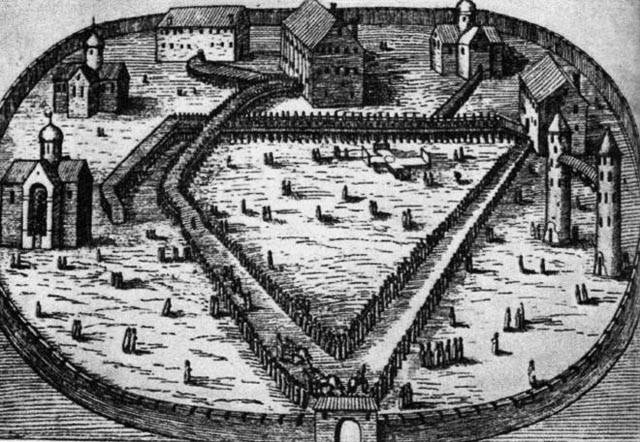
Alexandrovskaya Sloboda. Engraving of the book by J. Ulfeldt “Travel to Russia”. 1608
Here, as we remember, the life of the guardsmen was organized according to the model of the monastery, in which Ivan IV became abbot, Malyuta Skuratov became a sexton, Afanasy Vyazemsky became a cellarer. Albert Schlichting, who served the royal physician Lindsey, calls the prince “close adviser to the tyrant”And claims that the tsar took medicine only from the hands of Vyazemsky.
Oprichnina service of Afanasy Vyazemsky
The Westphalian Heinrich Staden, who served in the oprichnina, claims that it was Afanasy Vyazemsky, Alexey Basmanov and nurseryman Pyotr Zaitsev who in 1565 recruited the children of the boyars of Suzdal, Mozhaisk and Vyazemsky districts into the oprichnina - at the same time, as they say, they personally interviewed the candidates, collected information about their origin, were interested in their opinion about “malicious intrigues"boyars. And in 1566, Vyazemsky was sent to Mezen to survey the oprichnina and zemstvo possessions. Around this time, between 1565 and 1566, he received the high rank of armorer.
At the beginning of his career, Afanasy was helped by an older relative, the above-mentioned Alexander Vyazemsky-Glukhoy. Now he returned good for good and contributed to his appointment to voivodeship positions four times. Another relative who “went up” thanks to the support of the hero of the article was Dmitry Ivanovich Vyazemsky-Lisitsa.
In June 1566, Afanasy Vyazemsky participated in peace negotiations with the ambassadors of the Grand Duchy of Lithuania and Russia, and in the documents he was already named okolnichy, gunsmith and governor of Vologda. By the way, in Vologda he built a church, which was consecrated in the name of his patron saint - Athanasius of Alexandria.
Vyazemsky's diplomatic career continued in February 1567, when he, together with Alexei Basmanov, agreed on an alliance with Sweden. In addition, Vyazemsky participated in the tsar’s secret negotiations with the English ambassadors Jenkinson (September 1567) and Randolph (February-June 1569). Ivan IV was then quite seriously afraid of becoming a victim of the conspirators, and therefore, among other issues, the possibility of emigration by Ivan IV and his family to England was discussed. It was this fear of the tsar that provoked mass repressions, which (let us remember once again) began only in 1568, and of which Vyazemsky, along with others, became a victim.
In September 1567, we see A. Vyazemsky as the second courtyard governor during a campaign against Lithuania. In 1568 Afanasy, Malyuta Skuratov and Vasily Gryaznoy together they conducted an investigation into the conspiracy of the equerry I.P. Fedorov (in favor of the tsar’s cousin, the appanage prince Vladimir Andreevich). It is curious that Vladimir himself informed the Tsar about this conspiracy. In the same year, Afanasy Vyazemsky, Vasily Gryaznoy and Malyuta Skuratov, at the head of detachments of guardsmen, were sent by the tsar to destroy the houses of Muscovites he disliked and bring beautiful women to the palace.
In 1569, Afanasy Vyazemsky became a boyar, and at the end of the same year he went with the tsar on a punitive campaign against Novgorod. Among others, such honored people as Alexey Basmanov and his two sons (Peter and Fedor), as well as the Duma clerk, the head of the embassy order (in fact, the Minister of Foreign Affairs) and the keeper of the State Seal Ivan Mikhailovich Viskovatykh, suffered. All of them were accused of conspiring with Archbishop Pimen, who allegedly negotiated with the Polish king Sigismund II Augustus on the transfer of Novgorod and Pskov to him, and wanted to place the appanage prince Vladimir Andreevich, the cousin of Ivan IV, on the Russian throne.
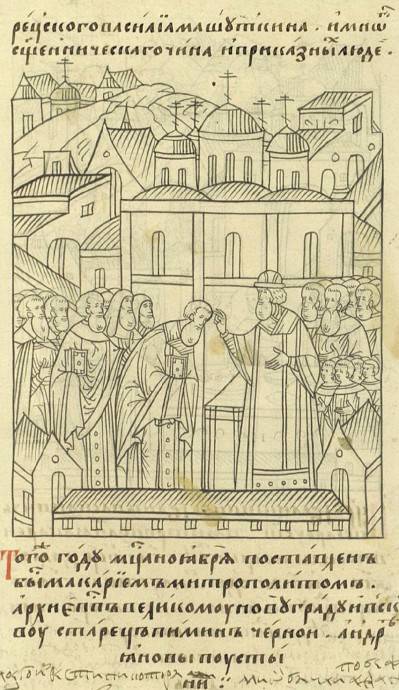
Metropolitan Macarius appoints Pimen Cherny Bishop of Novgorod. Miniature of the Facial Chronicle Code
It was Vyazemsky who led the investigation into Pimen’s case.
Dyak Viskovatykh was also accused of communicating with the Turkish Sultan and the Crimean Khan, urging them to march on Kazan and Astrakhan.
Below you will see two miniatures from the so-called “Royal Book” (this is one of the parts of the Front Chronicle compiled by order of Ivan IV). Here I. M. Viskovatykh is depicted with a cross in his hands during the oath to Ivan IV:
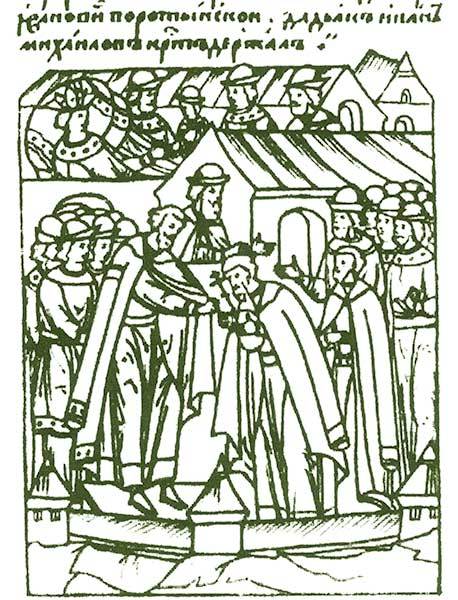
And in this miniature Viskovatykh is depicted twice - next to the royal bed and separately in the upper left corner:
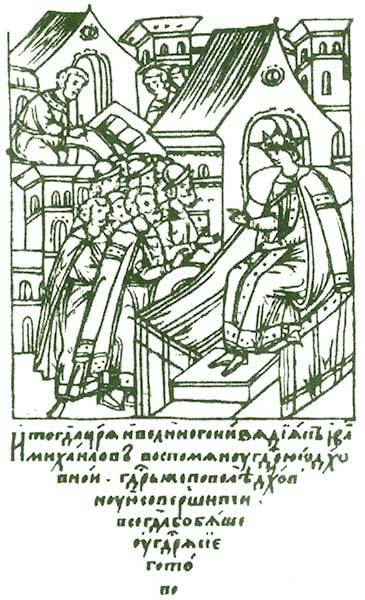
Alexey and Fyodor Basmanov, frame from the film “Ivan the Terrible” (director S. Eisenstein, 1944):
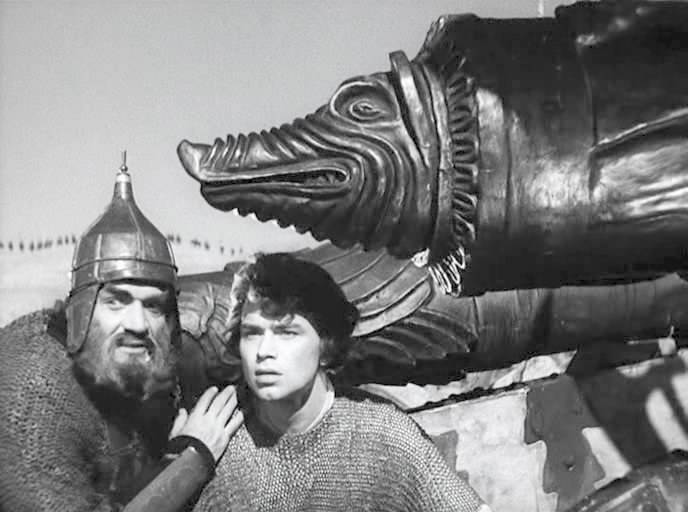
Ivan Viskovatykh, Alexey and Basmanov and his eldest son Peter were executed, the former royal favorite Fyodor Basmanov was exiled with his family to White Lake, where he died. Later, Ivan the Terrible sent 223 rubles to the Trinity-Sergius Monastery, as well as 23 rubles worth of candles to commemorate the soul of Ivan Viskovatykh, and 100 rubles to commemorate the soul of Fyodor Basmanov.
Disgrace and death
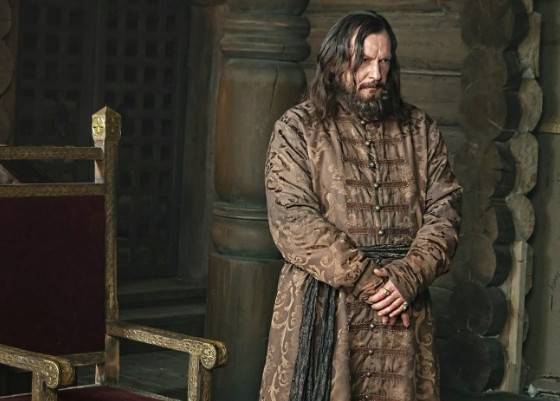
Prince Afanasy Vyazemsky in the TV series “Grozny”, 2020
However, already in the summer of 1570 Afanasy Vyazemsky found himself in disgrace. Albert Schlichting claims that the denunciation against Vyazemsky was written by the “boyar’s son” Grigory Lovchikov, who accused him of informing the Novgorodians about the tsar’s upcoming campaign against their city:
Moreover, Vyazemsky’s sister turned out to be married to Zemstvo Funikov-Kurtsov, whose relatives were executed in Novgorod. First, Vyazemsky’s servants were hanged at the entrance to the house, then his brother was killed. Having learned about this, Athanasius, if you believe Schlichting, took refuge for several days in the house of the royal physician Arnold Lindzey (and Schlichting, as we remember, served Lindzey and was his translator). In the end, Vyazemsky was sentenced to pay a large fine, while his property was confiscated - he had to pay 1000, then 500 and 300 rubles daily. Since Vyazemsky could not pay the fine, he was “taken to justice” - that is, every day, except for church holidays, he was beaten on the legs with batogs in the market square.
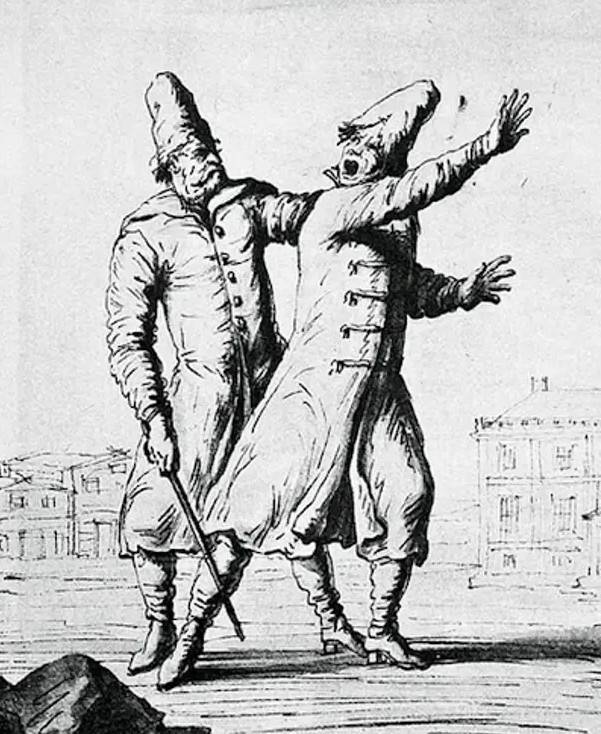
Right in a drawing from the album of E. Palmquist, 1674.
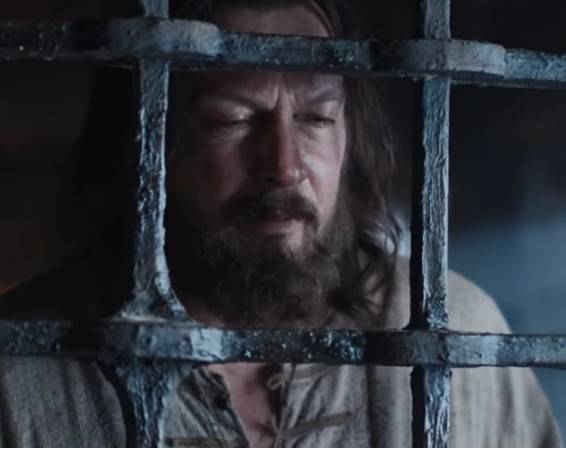
Afanasy Vyazemsky in prison, still from the TV series “Grozny”, 2020
Unable to withstand these tortures, Vyazemsky slandered some Moscow merchants, from whom it was supposedly possible to recover the money loaned to them. Karamzin claims that Vyazemsky died in Moscow from torture, but it is now generally accepted that he died chained in the prison of Gorodetsky Posad (modern Gorodets). This is reported, for example, by Heinrich von Staden.
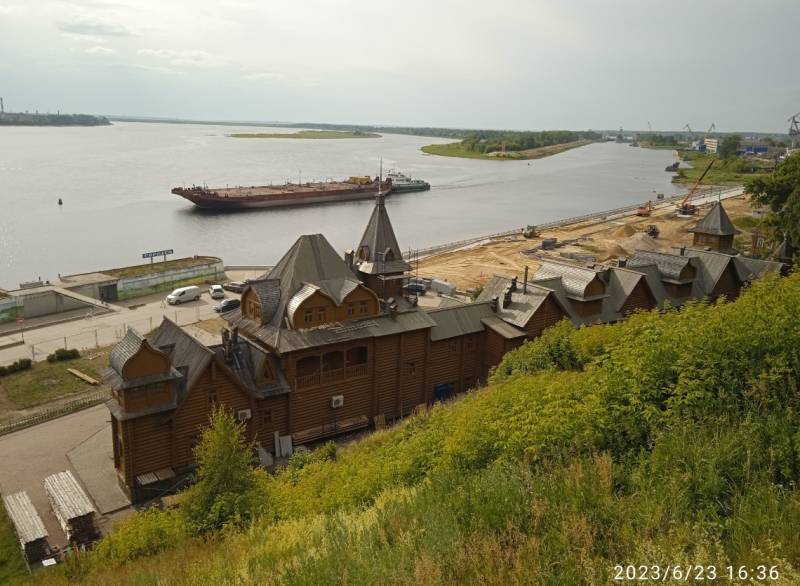
Gorodets, view of the Volga, photo taken by the author
All relatives of Afanasy Vyazemsky after his disgrace were expelled from the oprichnina. It is curious that the name of Vyazemsky, unlike the names of his servants (as well as the names of many other executed people), is absent in the so-called “Synodik of the disgraced Tsar Ivan the Terrible” of 1583. That is, the king even then considered this prince guilty. However, most modern historians believe that Vyazemsky did not betray Ivan IV and, like Viskovatykh, Basmanov and some other high-ranking guardsmen, became a victim of the struggle of court factions, in which Vasily Gryaznoy and Malyuta Skuratov ultimately won.
Information